
Deutsch-Chinesische Enzyklopädie, 德汉百科
 Romania
Romania

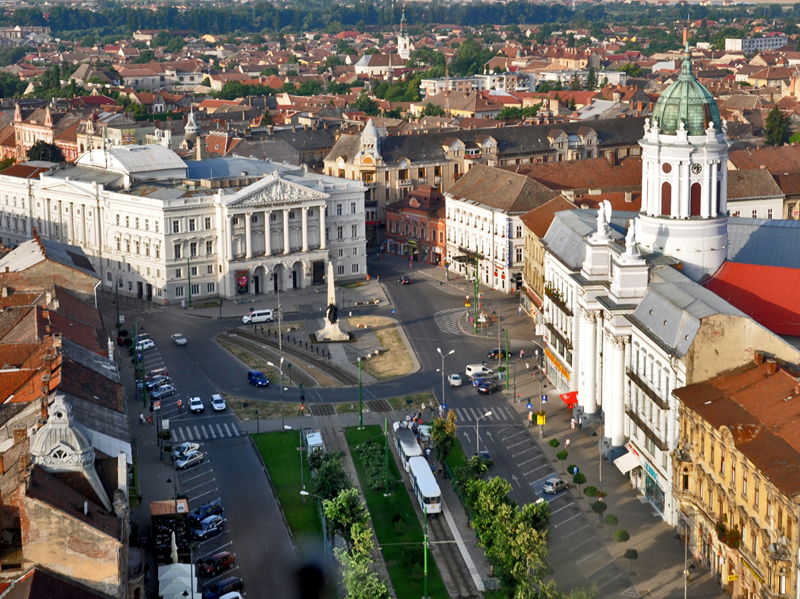

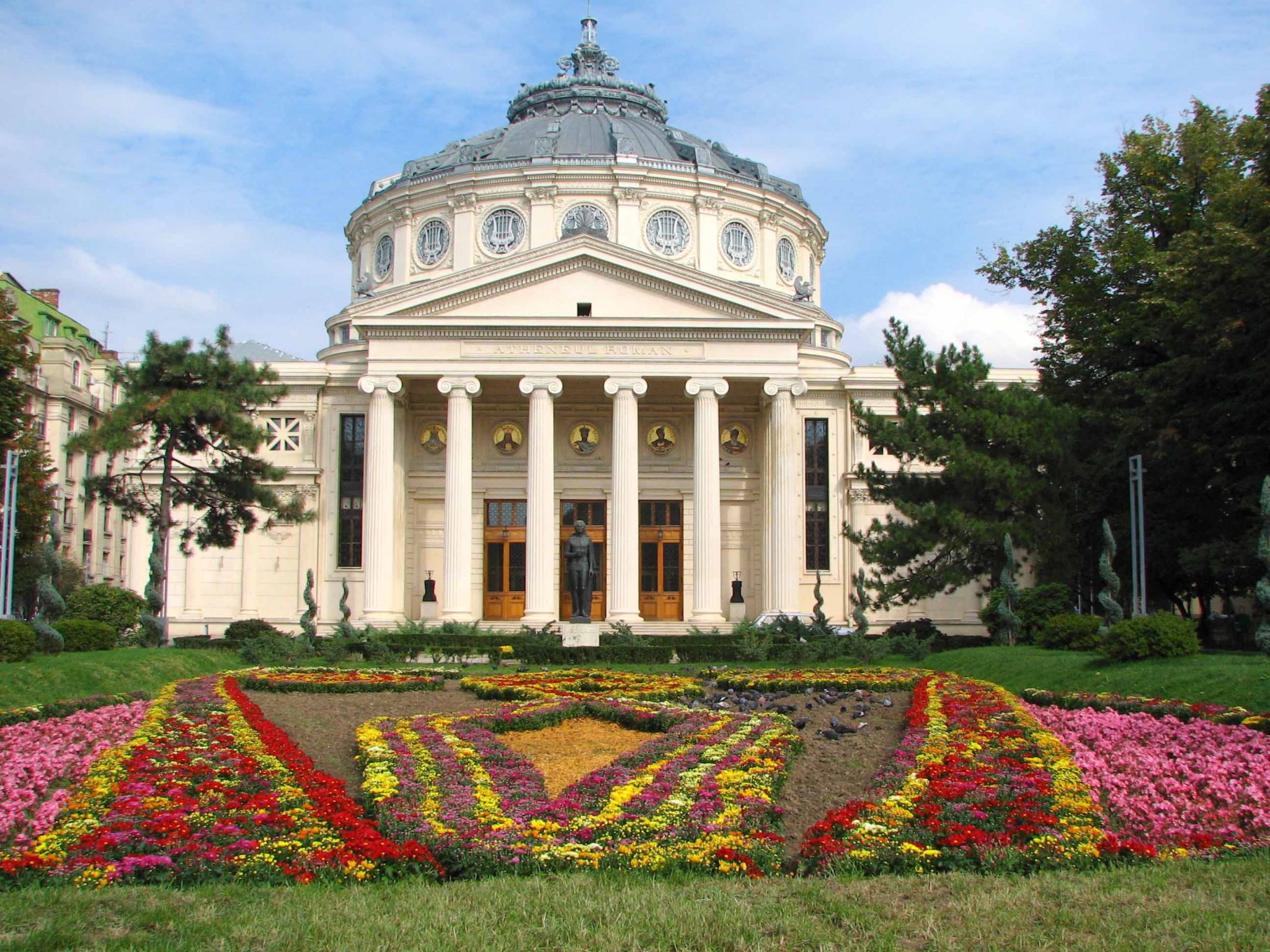

 Albania
Albania
 Bosnia Herzegovina
Bosnia Herzegovina
 Bulgaria
Bulgaria
 Greece
Greece
 Kosovo
Kosovo
 Croatia
Croatia
 Montenegro
Montenegro
 Nordmazedonien
Nordmazedonien
 Romania
Romania
 Serbia
Serbia
 Slovenia
Slovenia
 Turkey
Turkey
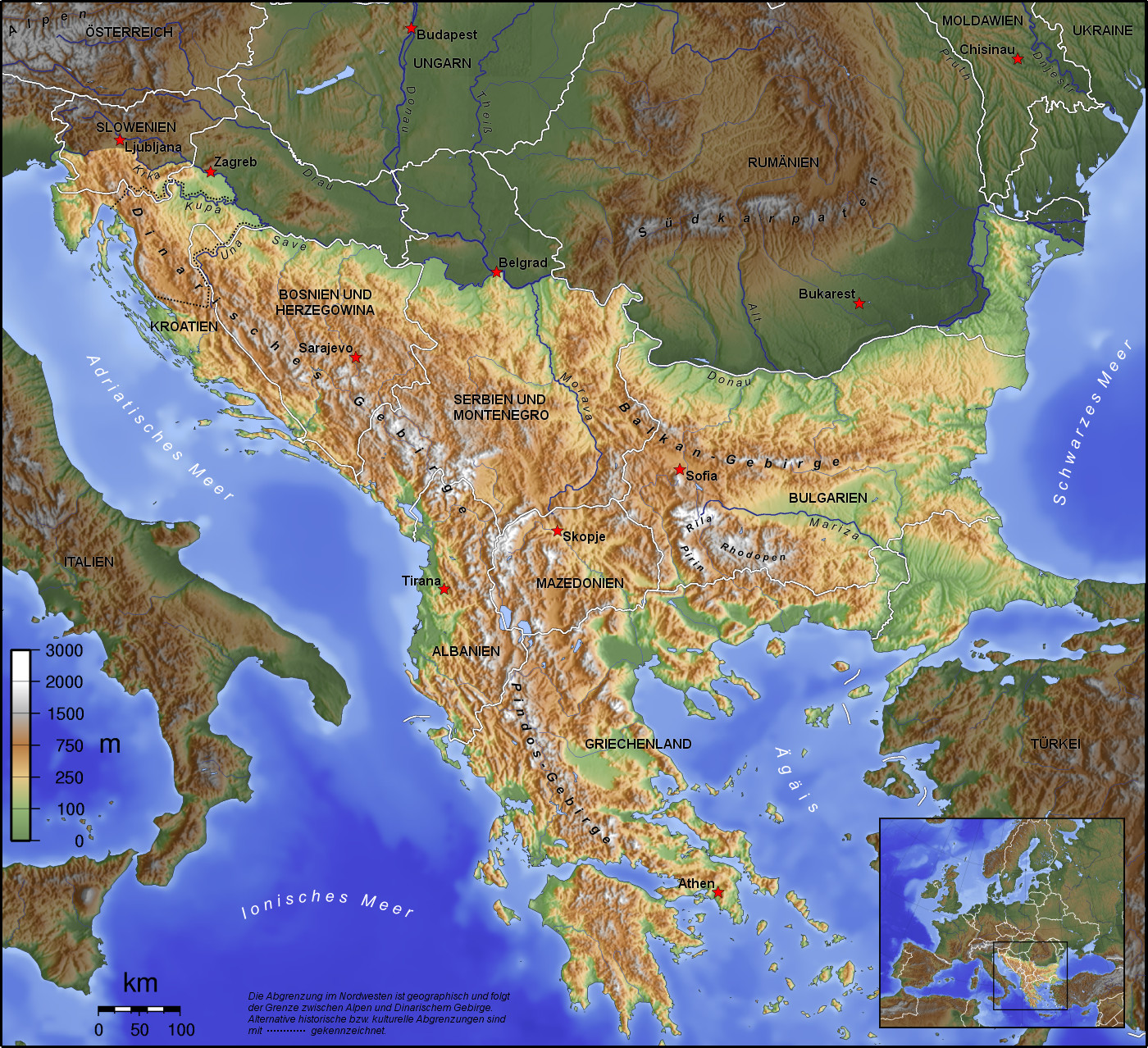
巴尔干半岛(Balkans),是一个地理名词,用以描述欧洲的东南隅位于亚得里亚海和黑海之间的陆地,详细的范围依照定义不同有许多种说法。该地约有55万平方公里和近5500万人口。在古希腊时代,巴尔干半岛被称为哈伊莫司半岛。该地区的名称来自于一条通过保加利亚中心到东塞尔维亚的巴尔干山脉。[1]
巴尔干地区向来存在诸多矛盾,其中既有宗教矛盾,也有领土争端。由于半岛的地缘政治重要性,由此而来的列强干涉致使这一地区的矛盾频繁被放大为战争,因此又有欧洲火药库之称。不过近年巴尔干半岛(南斯拉夫内战后至今)已实现停火与和平,只是偶然间在领土主权上有些纠纷,例如科索沃主权问题。第一次世界大战的触发点之——萨拉热窝事件亦是发生在巴尔干半岛上。
目前,巴尔干半岛共有11个国家,共有面积是47.6万平方公里,人口1.3亿。
南欧相邻地中海的三大半岛,从东向西分别为巴尔干半岛、意大利半岛(亚平宁半岛)、伊比利亚半岛。
半岛地处欧、亚、非三大陆之间,是欧、亚联系的陆桥,南临地中海重要航线,东有博斯普鲁斯海峡和达达尼尔海峡扼黑海的咽喉,地理位置极为重要。地形以山地为主,喀尔巴阡山以南多为山丘及石灰岩地形,以北多以为平原为主。半岛西部有迪纳拉-品都斯山脉,中东部有喀尔巴阡-老山(巴尔干)山脉。老山山脉是阿尔卑斯、喀尔巴阡山的延伸,经南斯拉夫东部,横贯保加利亚中部,直临黑海。东西两列山脉之间是古老的罗多彼山脉和马其顿山丛,最高峰穆萨拉峰,海拔2925米。半岛上平原分布零散,仅萨瓦河、多瑙河、马里查河谷较宽广。 巴尔干半岛位于欧洲东南部,三面被水环绕:西邻亚德里亚海、南面是地中海(包括爱奥尼亚海和爱琴海)和马尔马拉海、东边是黑海。其北部边界通常被定为多瑙河、萨瓦河和库帕河。[2] [3]巴尔干半岛包括49万平方公里土地。
Die Balkanhalbinsel (auch kurz Balkan, oft synonym mit Südosteuropa verwendet) ist eine geographisch nicht eindeutig definierte Halbinsel im Südosten Europas. Sie ragt in das Mittelmeer und ist nach dem Balkangebirge benannt. Der größte Staat auf der Halbinsel ist Griechenland, gefolgt von Bulgarien (in dem sich der Großteil des Balkangebirges befindet), Serbien, Bosnien und Herzegowina, Albanien, Nordmazedonien, Montenegro und dem Kosovo. Die Staatsgebiete von Serbien, Kroatien, Rumänien, Slowenien und der Türkei, die durch ihre thrakischen Provinzen Anteil am Balkan hat, reichen über die Grenzen der Balkanhalbinsel hinaus.
Ungeachtet der Herleitung des geographischen Namens sind das dominierende Gebirge des Balkans die Dinariden im westlichen Teil der Halbinsel; ihr höchster Gipfel Jezerca (2694 m) liegt in Albanien. Die höchste Erhebung des Balkans ist der Gipfel Musala (2925 m) im Rila-Gebirge. Das Balkangebirge erreicht 2376 m maximale Gipfelhöhe.
バルカン半島(バルカンはんとう、Balkan Peninsula)、またはバルカン(Balkans)は東南ヨーロッパにある地理的領域であり、地理的・歴史的に様々な意味合いと定義付け[1][2]の下で使用される概念である[3]。名称はバルカン山脈からきている。この山脈はセルビアとブルガリアの国境から黒海沿岸まで、ブルガリア全土を横断している。バルカン半島は北西をアドリア海に、南西をイオニア海に、南と南東をエーゲ海に、そして東と北東を黒海によって区切られている[4]。北側の境界は論者と文脈によって様々に定義されていて不定である。バルカン半島の最高地点はリラ山地にあるムサラ山(2925メートル)である。
バルカン半島という概念はドイツの地理学者アウグスト・ツォイネによって1808年に創り出された[5][6]。彼はバルカン山脈がディナル・アルプス山脈と共にアドリア海から黒海まで東南ヨーロッパを区分していると誤認していた[5]。この地域はかつてオスマン帝国の属領であり、バルカン半島という用語は19世紀にはヨーロッパ・トルコ(European Turkey)の同義語であった[7]。バルカン半島という言葉は地理学的というよりもむしろ地政学的定義を持っており、この傾向は20世紀初頭にユーゴスラヴィア王国が成立するとさらに増した。バルカン半島を定義する自然境界が「半島」の学術的定義と一致していないため、現代の地理学者は「バルカン半島」という考え方を拒絶しており、通常はバルカンを「地域」として議論を行っている。この言葉には徐々に、特に1990年代以降、バルカニゼーション(バルカン化)のプロセスと関連して汚名と侮蔑的意味合いが与えられており[4][8]、それ故に東南ヨーロッパ(南東ヨーロッパ)という別の用語が使用されている。
The Balkans (/ˈbɔːlkənz/ BAWL-kənz), also known as the Balkan Peninsula, is a geographic area in Southeast Europe with various geographical and historical definitions.[2][3][4] The region takes its name from the Balkan Mountains that stretch throughout the whole of Bulgaria. The Balkan Peninsula is bordered by the Adriatic Sea in the northwest, the Ionian Sea in the southwest, the Aegean Sea in the south, the Turkish Straits in the east, and the Black Sea in the northeast. The northern border of the peninsula is variously defined.[5] The highest point of the Balkans is Mount Musala, 2,925 metres (9,596 ft), in the Rila mountain range, Bulgaria.
The concept of the Balkan Peninsula was created by the German geographer August Zeune in 1808,[6] who mistakenly considered the Balkan Mountains the dominant mountain system of Southeast Europe spanning from the Adriatic Sea to the Black Sea. The term Balkan Peninsula was a synonym for Rumelia in the 19th century, the European provinces of the Ottoman Empire. It had a geopolitical rather than a geographical definition, which was further promoted during the creation of the Kingdom of Yugoslavia in the early 20th century. The definition of the Balkan Peninsula's natural borders do not coincide with the technical definition of a peninsula; hence modern geographers reject the idea of a Balkan peninsula, while historical scholars usually discuss the Balkans as a region. The term has acquired a stigmatized and pejorative meaning related to the process of Balkanization,[5][7] and hence the preferred alternative term used for the region is Southeast Europe.
Les Balkans sont une des trois « péninsules » de l'Europe du Sud, mais cette appellation traditionnelle est parfois contestée en l'absence d'un isthme : les géographes préfèrent le terme de « région ». Elle est bordée par des mers sur trois côtés : la mer Adriatique et la mer Ionienne à l'ouest, la mer Égée au sud et la mer de Marmara et la mer Noire à l'est. Au nord, on la délimite généralement par les cours du Danube, de la Save et de la Kupa. Cette région couvre une aire totale de plus de 550 000 km2 et regroupe une population de près de 53 millions d’habitants.
La penisola balcanica, nota anche come Balcani (dalla forma abbreviata di Monti Balcani, sistema montuoso tra Bulgaria e Serbia; dal turco balkan ‘monteʼ[2]), è una penisola dell'Europa orientale; è delimitata a ovest dal mare Adriatico, a sud-ovest dal mar Ionio, a est dal mar Nero, a sud-est dal mar di Marmara, e a sud dal mar Egeo.
Come spesso accade per le penisole, incerta è la definizione del suo confine sulla terraferma, aggravato dal fatto che si tratta di uno dei suoi confini più estesi. Non aiuta inoltre la definizione di questa linea di demarcazione il fatto che il territorio presenta al suo interno grandi differenze e frammentazioni per storia, nazionalità, lingua, cultura e religione delle popolazioni che vi abitano.
Solitamente se ne stabilisce il confine sul Danubio e sul suo affluente Sava. In questo modo si include in tale area anche parte della Slovenia e della Romania (paese di lingua romanza orientale), che però storicamente hanno avuto a che fare con i Balcani solo dopo la dissoluzione dell'Impero asburgico. Secondo il geografo Vittorio Vialli, la delimitazione a nord è rappresentata dalla linea geografica Istria-Odessa. Esclude dalla regione la Slovenia l'interpretazione del confine che include il fiume Kupa, facendolo partire dalla città di Fiume e raggiungendo le foci del Danubio.[3] In tal modo confina a ovest con la cosiddetta regione geografica italiana,[4][5] che include anche territori non facenti parte della Repubblica Italiana. La definizione politica di Balcani venne in uso nel XIX secolo per designare i paesi europei interessati dall'espansione e dalla successiva dissoluzione dell'Impero ottomano.[6]
Del resto le caratteristiche del territorio, solcato da catene montuose parallele che ostacolarono il movimento in direzione nord-sud e una colonizzazione uniforme già ai tempi dell'espansione greco-romana, e la sua stessa collocazione geografica contribuiscono a spiegare le tormentate vicende storiche che hanno caratterizzato la penisola.[7]
Fino al 1975 la penisola era attraversata dal Balkan Express, un treno con partenza da Vienna e arrivo a Istanbul. Il clima è continentale nel nord e nell’est del territorio (con estati calde e inverni molto rigidi), mentre l’area occidentale e la Grecia hanno un clima mediterraneo.
La península balcánica o península de los Balcanes es una de las tres grandes penínsulas del sur de Europa, continente al que está unida por los montes Balcanes al este (cordilleras que han dado nombre a la península) y los Alpes Dináricos, al oeste.
Балка́нский полуо́стров (хорв. Balkanski poluotok, словен. Balkanski polotok, серб. Балканско полуострво, рум. Peninsula Balcanică, болг. и макед. Балкански полуостров, алб. Gadishulli Ballkanik, греч. Βαλκανική χερσόνησος, тур. Balkan Yarımadası, босн. Balkansko poluostrvo, черног. Balkansko poluostrvo) расположен на юго-востоке Европы. Площадь — около 467 тыс. км².
С юга, юго-запада и юго-востока омывается: Адриатическим, Ионическим, Мраморным, Критским, Эгейским и Чёрным морями.
Северной границей полуострова считается условная линия, проведённая от устья Дуная, по рекам Дунай, Сава и Купа (Колпа), а от истока последней в Горском Котаре (Хорватия) — до залива Кварнер с портом Риека (Хорватия).
Рельеф преимущественно гористый (Стара-Планина, Родопы, Динарское нагорье, Пинд). По размерам в Европе уступает только Скандинавскому и Пиренейскому полуостровам.
 Albania
Albania
 Bosnia Herzegovina
Bosnia Herzegovina
 Bulgaria
Bulgaria
 Greece
Greece
 Kosovo
Kosovo
 Croatia
Croatia
 Montenegro
Montenegro
 Nordmazedonien
Nordmazedonien
 Romania
Romania
 Serbia
Serbia
 Slovenia
Slovenia
 Turkey
Turkey
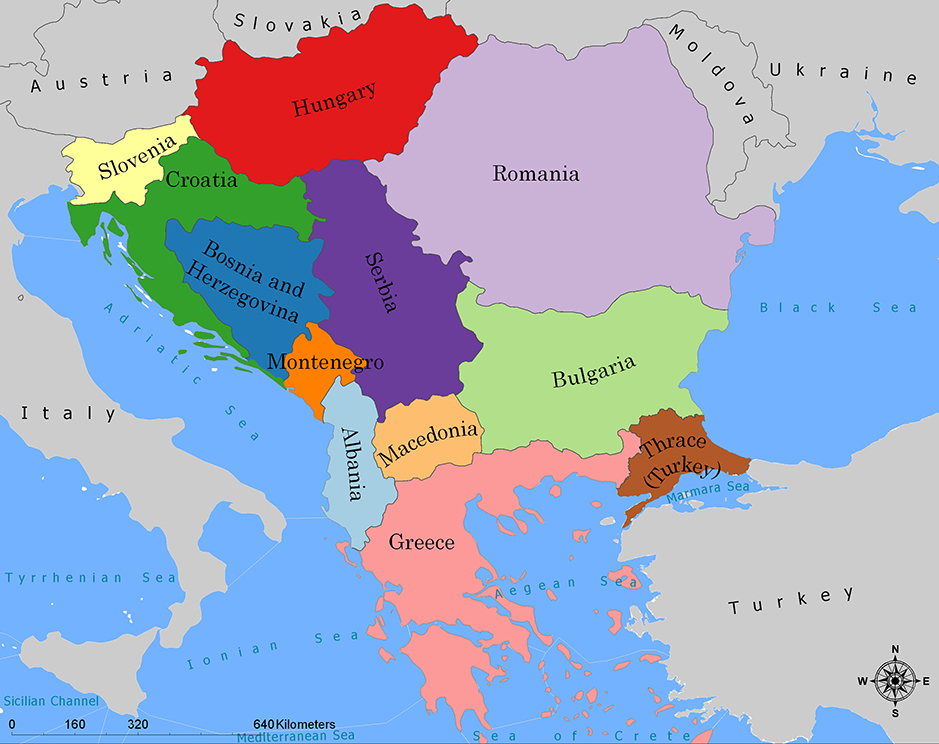
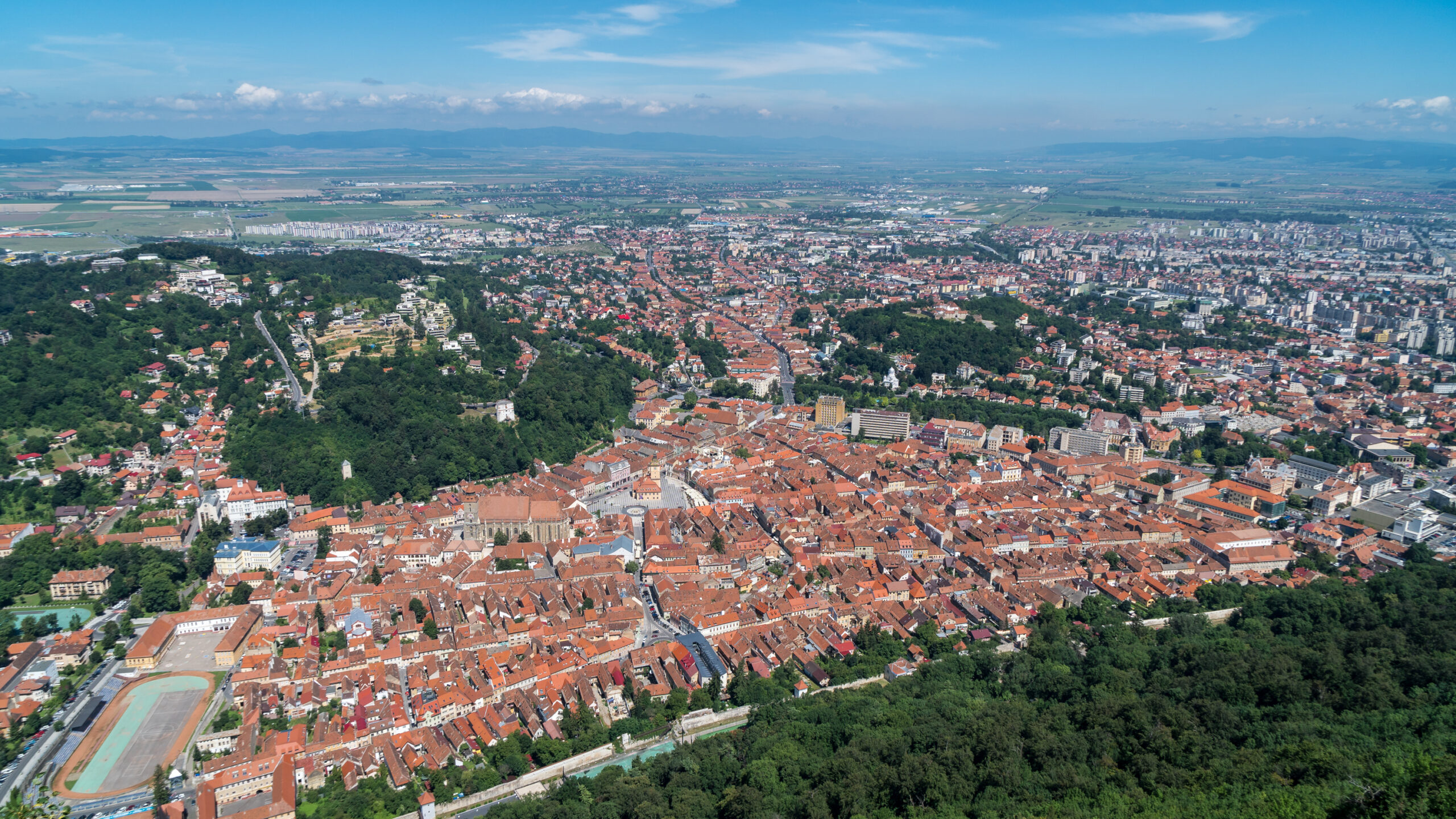
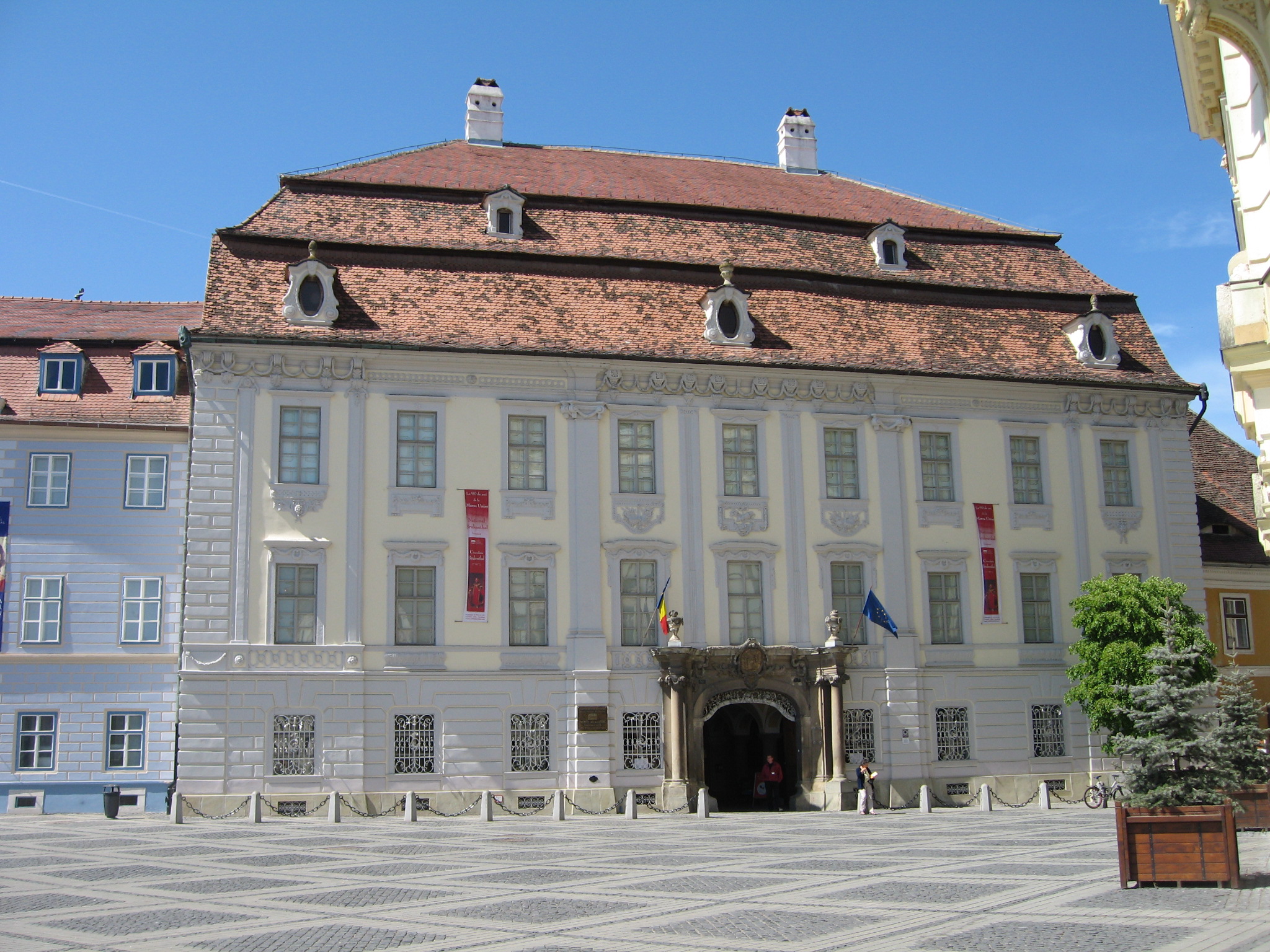

布加勒斯特(罗马尼亚语:București),罗马尼亚首都,位于罗马尼亚东南部,瓦拉几亚平原中部,多瑙河支流登博维察河畔。有“小巴黎”之称。面积约228平方公里,人口近200万。它是罗马尼亚最大的城市,也是政治、经济、文化中心。若以以人口计算,布加勒斯特是欧盟第六大都市。
据历史记载,该市已有500多年的历史。1459年,布加勒斯特成为罗马尼亚要塞,1574年发展成为城市,1659年起成为瓦拉几亚公国首都。1862年成为统一的罗马尼亚国家首都。1877年5月9日罗马尼亚在此宣布独立。1947年为罗马尼亚人民共和国首都。1977年发生地震。1989年爆发革命,成为新罗马尼亚的首都。此后,经济不断发展,成为罗马尼亚具有代表性的城市。该市行政划分为六个区,设市长一名,各区区长一名,均由市民选举产生。布加勒斯特有两支著名的足球强队——布加勒斯特迪纳摩和布加勒斯特星队。位于布加勒斯特的罗马尼亚人民宫号称是世界第二大建筑物。
Bukarest (rumänisch: București [bukuˈreʃtʲ]; ) ist die Hauptstadt Rumäniens. Sie ist mit fast 1,9 Millionen Einwohnern[1] und einer urbanen Agglomeration von 2,2 Millionen Einwohnern die siebtgrößte Stadt der Europäischen Union.
Nachdem Bukarest 1659 Târgoviște als Landeshauptstadt endgültig abgelöst hatte, wurde es zum politischen, wirtschaftlichen und kulturellen Mittelpunkt der Walachei und später von Rumänien. Die Stadt verfügt über mehrere Universitäten, verschiedene andere Hochschulen sowie zahlreiche Theater, Museen und weitere Kultureinrichtungen.
Die kosmopolitische Hochkultur und der dominierende französische Einfluss der neubarocken Architektur der Stadt brachten ihr den Beinamen Micul Paris („Kleines Paris“, auch „Paris des Ostens“) ein.[2] In der Amtszeit des rumänischen Diktators Nicolae Ceaușescu wurden weiträumig historische Stadtviertel zerstört, um dem monumentalen Zuckerbäckerstil des Staatsoberhaupts Platz zu machen.
Bukarest wurde einer Legende nach von einem Hirten namens Bucur gegründet.[11] Bucurie bezeichnet im Rumänischen glückhafte Freude, und Bucur ist ein verbreiteter Familienname. Im etymologischen Sinn bedeutet București: Du bist froh.[12] Eine weitere Erzählung berichtet von dem getischen König Dromichaites,[13] der Freudenstadt errichtete.
Bukarest wird in einer auf den 20. September 1459 datierten Urkunde erstmals erwähnt.[14] Die Urkunde wurde von dem Woiwoden und Feldherrn Vlad Țepeș, mit dem Beinamen Drăculea, ausgestellt.
In der zweiten Hälfte des 15. Jahrhunderts entwickelte sich Bukarest, wo sich schon nach 1400 eine Handwerkersiedlung mit Schmiede, Töpferei und Gerberei nachweisen lässt, zum Curtea (Fürstensitz) der Walachei. Fürst Radu der Schöne bezeichnete am 14. Oktober 1465 Bukarest in einer Urkunde als Fürstensitz.[15] Die Stadt erlangte ihre zentralstädtische Bedeutung als fürstliches Macht- und Handelszentrum, das in einem Verdichtungsraum von Siedlungen lag. Zwischen 1459 und 1625 erscheinen allein 41 Siedlungen auf dem Gebiet des heutigen Bukarest.
Nachfolgend war Bukarest abwechselnd mit Tîrgoviște Hauptstadt der Walachei. Der Hauptmarkt entstand um die Lipscani-Straße.
ブカレスト/ブクレシュティ(ルーマニア語: București、マジャル語・標準ドイツ語: Bukarest)は、ルーマニアの首都で同国最大の都市である。ブカレストはルーマニア南東部にあり、ドゥンボヴィツァ川河畔の都市でルーマニアの文化、産業、金融の中心都市である。
Bucharest (/ˈb(j)uːkərɛst/; Romanian: București [bukuˈreʃtʲ] (![]() listen)) is the capital and largest city of Romania, as well as its cultural, industrial, and financial centre. It is located in the southeast of the country, at 44°25′57″N 26°06′14″ECoordinates:
listen)) is the capital and largest city of Romania, as well as its cultural, industrial, and financial centre. It is located in the southeast of the country, at 44°25′57″N 26°06′14″ECoordinates:  44°25′57″N 26°06′14″E, on the banks of the Dâmbovița River, less than 60 km (37.3 mi) north of the Danube River and the Bulgarian border.
44°25′57″N 26°06′14″E, on the banks of the Dâmbovița River, less than 60 km (37.3 mi) north of the Danube River and the Bulgarian border.
Bucharest was first mentioned in documents in 1459. It became the capital of Romania in 1862 and is the centre of Romanian media, culture, and art. Its architecture is a mix of historical (neo-classical), interbellum (Bauhaus and art deco), communist-era and modern. In the period between the two World Wars, the city's elegant architecture and the sophistication of its elite earned Bucharest the nickname of "Little Paris" (Micul Paris).[9] Although buildings and districts in the historic city centre were heavily damaged or destroyed by war, earthquakes, and above all Nicolae Ceaușescu's program of systematization, many survived. In recent years, the city has been experiencing an economic and cultural boom.[10] In 2016, the historical city centre was listed as "endangered" by the World Monuments Watch.[11]
According to the 2011 census, 1,883,425 inhabitants live within the city limits,[6] a decrease from the 2002 census.[3] Adding the satellite towns around the urban area, the proposed metropolitan area of Bucharest would have a population of 2.27 million people.[12] According to Eurostat, Bucharest has a functional urban area of 2,412,530 residents (as of 2015).[5] Bucharest is the sixth-largest city in the European Union by population within city limits, after London, Berlin, Madrid, Rome, and Paris.
Economically, Bucharest is the most prosperous city in Romania[13] and is one of the main industrial centres and transportation hubs of Eastern Europe. The city has big convention facilities, educational institutes, cultural venues, traditional "shopping arcades", and recreational areas.
The city proper is administratively known as the "Municipality of Bucharest" (Municipiul București), and has the same administrative level as that of a national county, being further subdivided into six sectors, each governed by a local mayor.
Bucarest (en roumain București ![]() ? /bu.kuˈreʃtʲ/ [Fiche], ou Municipiul București en version longue) est la capitale de la Roumanie.
? /bu.kuˈreʃtʲ/ [Fiche], ou Municipiul București en version longue) est la capitale de la Roumanie.
La ville est mentionnée pour la première fois en 1459 comme marché fortifié au carrefour des routes commerciales entre Târgoviște, alors capitale de la Valachie, Brașov en Transylvanie, et le port de San-Giorgio fondé par les Génois sur le Danube. Ce marché s'est rapidement développé et, au XVIIe siècle, il devient la capitale de la principauté de Valachie, puis, en 1859, de la Roumanie.
Lors du dernier recensement de 2011, la municipalité comptait 1 883 425 habitants, en diminution par rapport à 2002 et 1992. Bucarest reste la plus grande ville de Roumanie.
Bucarest (AFI: [ˈbuːkarest];[3] in romeno: București, pronuncia [bukuˈreʃtʲ]) è la capitale e la città più popolosa della Romania ed è la sesta più popolosa dell'Unione Europea. Posta nel sud del Paese, sul fiume Dâmbovița, è il maggiore centro industriale e commerciale del paese. Il territorio della città è interamente circondato dal distretto di Ilfov, pur non facendone parte, in quanto il municipio è l'unico della Romania a fare distretto di per sé.
Bucarest è la 6ª città per popolazione dell'Unione europea. Secondo le stime degli specialisti, Bucarest raccoglie più di tre milioni di persone al giorno e nei prossimi cinque anni questo numero supererà i quattro milioni. A questo si aggiungono le località intorno alla città, che fanno parte della futura area metropolitana, hanno una popolazione di circa 430.000.[4]
La prima menzione della località appare nel 1459. Nel 1862 divenne la capitale dei Principati Uniti; da allora ha subito cambiamenti continui, diventando il centro della scena artistica, culturale e mediatica rumena. L'architettura elegante e l'atmosfera urbana le portarono durante la Belle Époque il soprannome di "Piccola Parigi"[5], anche se diversi edifici e quartieri del centro storico furono danneggiati o interamente distrutti dalla guerra, dai terremoti e dal programma di sistemazione di Nicolae Ceausescu. Negli ultimi anni, la città ha vissuto un boom economico e culturale[6].
Secondo i dati preliminari del censimento del 2011, 1.677.985 abitanti vivono entro i limiti della città,[7] inferiore alla cifra registrata nel censimento del 2002.[8] L'area urbana si estende oltre Bucarest, con una popolazione di 1,93 milioni.[9] Con l'aggiunta di città satellitari attorno all'area urbana, l'area metropolitana di Bucarest avrebbe una popolazione di 2,2 milioni.[10] Secondo Eurostat, Bucarest ha un'area urbana più grande di 2.151.880 residenti.[11] Secondo dati non ufficiali, la popolazione è di oltre 3 milioni. Bucarest è la città più grande della Romania e la sesta nell'Unione europea secondo la popolazione entro i limiti della città.
Da un punto di vista economico, Bucarest è la città più prospera in Romania,[12] ed è uno dei principali centri industriali e dei nodi di trasporto nell'Europa orientale. La città dispone di strutture per convegni, istituti scolastici, aree culturali, centri commerciali e aree ricreative.
La città, avente lo stesso livello amministrativo dei distretti, è suddivisa in sei settori e amministrata dal Municipio di Bucarest.
Bucarest (en rumano: București, ![]() /bu.kuˈreʃtʲ/ (?·i)) es la capital y ciudad más poblada de Rumania, así como su principal centro industrial, comercial y cultural. Está situada en el sureste del país, a orillas del río Dâmbovița. La ciudad cuenta con 2.400.000 habitantes, según datos del censo de 2016,1 lo que la convierte, además, en la décima ciudad más poblada de la Unión Europea.3
/bu.kuˈreʃtʲ/ (?·i)) es la capital y ciudad más poblada de Rumania, así como su principal centro industrial, comercial y cultural. Está situada en el sureste del país, a orillas del río Dâmbovița. La ciudad cuenta con 2.400.000 habitantes, según datos del censo de 2016,1 lo que la convierte, además, en la décima ciudad más poblada de la Unión Europea.3
La ciudad fue mencionada por primera vez en documentos escritos a comienzos de 1459. Desde entonces ha pasado por muchos cambios, pero el más notable fue convertirse en la capital de Rumania en 1862, por lo que se consolidó como el centro nacional de la comunicación, cultural y económico. Su ecléctica arquitectura mezcla estilos neoclásico, de entreguerras (Bauhaus y Art Deco), comunista y moderno. En el periodo de entreguerras, la arquitectura de la ciudad y la sofisticación de sus elites le valieron a Bucarest el apodo de "Pequeña París" (Micul Paris).4 Pese a que muchos edificios y distritos del centro fueron dañados o destruidos por la guerra, terremotos y el programa de sistematización de Nicolae Ceaușescu, la mayoría permanecieron en pie.
Económicamente, la ciudad es la más próspera de Rumania5 y es uno de los principales centros industriales y de transporte de Europa del Este. Como ciudad más desarrollada del país, Bucarest tiene también una amplia gama de instalaciones educativas. La superficie total de Bucarest es de 226 km². Hasta 1989, las zonas circundantes eran principalmente rurales, pero tras la Revolución Rumana se comenzaron a construir nuevos vecindarios alrededor de la ciudad. De hecho, la ciudad en sí administrativamente se conoce como Municipio de Bucarest (Municipiul București) y tiene el mismo nivel administrativo que un distrito, siendo dividida la ciudad en seis sectores.

 Belgium
Belgium
 Breakthrough Prize
Breakthrough Prize
 Fundamental Physics Breakthrough Prize
Fundamental Physics Breakthrough Prize
 Bulgaria
Bulgaria
 Denmark
Denmark
 Germany
Germany
 Finland
Finland
 France
France
 Greece
Greece
 Israel
Israel
 Italy
Italy
 Netherlands
Netherlands
 Norwegen
Norwegen
 Austria
Austria
 Poland
Poland
 Portugal
Portugal
 Romania
Romania
 Sweden
Sweden
 Switzerland
Switzerland
 Genf
Genf
 Serbia
Serbia
 Slovakia
Slovakia
 Spain
Spain
 Czech Republic
Czech Republic
 Hungary
Hungary
 United Kingdom
United Kingdom

 Important International Organizations
Important International Organizations

 Science and technology
Science and technology
 *World famous research institutions
*World famous research institutions

欧洲核子研究中心(法语:Organisation Européenne pour la Recherche Nucléaire;英文:European Organization for Nuclear Research,通常被简称为CERN ),是世界上最大的粒子物理学实验室,也是万维网的发祥地。它成立于1954年9月29日,总部位于瑞士日内瓦西北部郊区的法瑞边境上,享有治外法权。CERN目前有21个成员国。以色列是第一个也是目前唯一一个非欧洲成员国。
CERN也被用来称呼它的实验室,其主要功能是为高能物理学研究的需要,提供粒子加速器和其它基础设施,以进行许多国际合作的实验。同时也设立了资料处理能力很强的大型电脑中心,协助实验数据的分析,供其他地方的研究员使用,形成了一个庞大的网络中枢。
欧洲核子研究中心现在已经聘用大约三千名的全职员工。并有来自80个国籍的大约6500位科学家和工程师,代表500余所大学机构,在CERN进行试验。这大约占了世界上的粒子物理学圈子的一半。
粒子物理学博物馆欢迎一般公众在办公时间参观。除此之外,事前预约的话每天上下午共有两个时段可以参观实际的实验工作,并备有导览说明。导览员来自各国的实验合作者,可以提供多种语言的向导。
Das CERN, die Europäische Organisation für Kernforschung, ist eine Großforschungseinrichtung bei Meyrin im Kanton Genf in der Schweiz. Am CERN wird physikalische Grundlagenforschung betrieben, insbesondere wird mit Hilfe großer Teilchenbeschleuniger der Aufbau der Materie erforscht. Der derzeit bedeutendste ist der Large Hadron Collider, der 2008 in Betrieb genommen wurde.
Das Akronym CERN leitet sich vom französischen Namen des Rates ab, der mit der Gründung der Organisation beauftragt war, dem Conseil européen pour la recherche nucléaire. Die offiziellen Namen des CERN sind European Organization for Nuclear Research im Englischen beziehungsweise Organisation européenne pour la recherche nucléaire im Französischen.[1]
Derzeit hat das CERN 22 Mitgliedstaaten. Mit etwa 3.200 Mitarbeitern (Stand: 31. Dezember 2015)[2] ist das CERN das weltweit größte Forschungszentrum auf dem Gebiet der Teilchenphysik. Über 10.000 Gastwissenschaftler[2] aus 85 Nationen arbeiten an CERN-Experimenten. Das Jahresbudget des CERN belief sich 2014 auf ungefähr 1,11 Milliarden Schweizer Franken (ca. 1 Milliarde Euro).[3]
Das CERN ist außerdem der Geburtsort des World Wide Web.[4]
 International cities
International cities
 Architecture
Architecture
 Sport
Sport
 Music
Music
 Geography
Geography
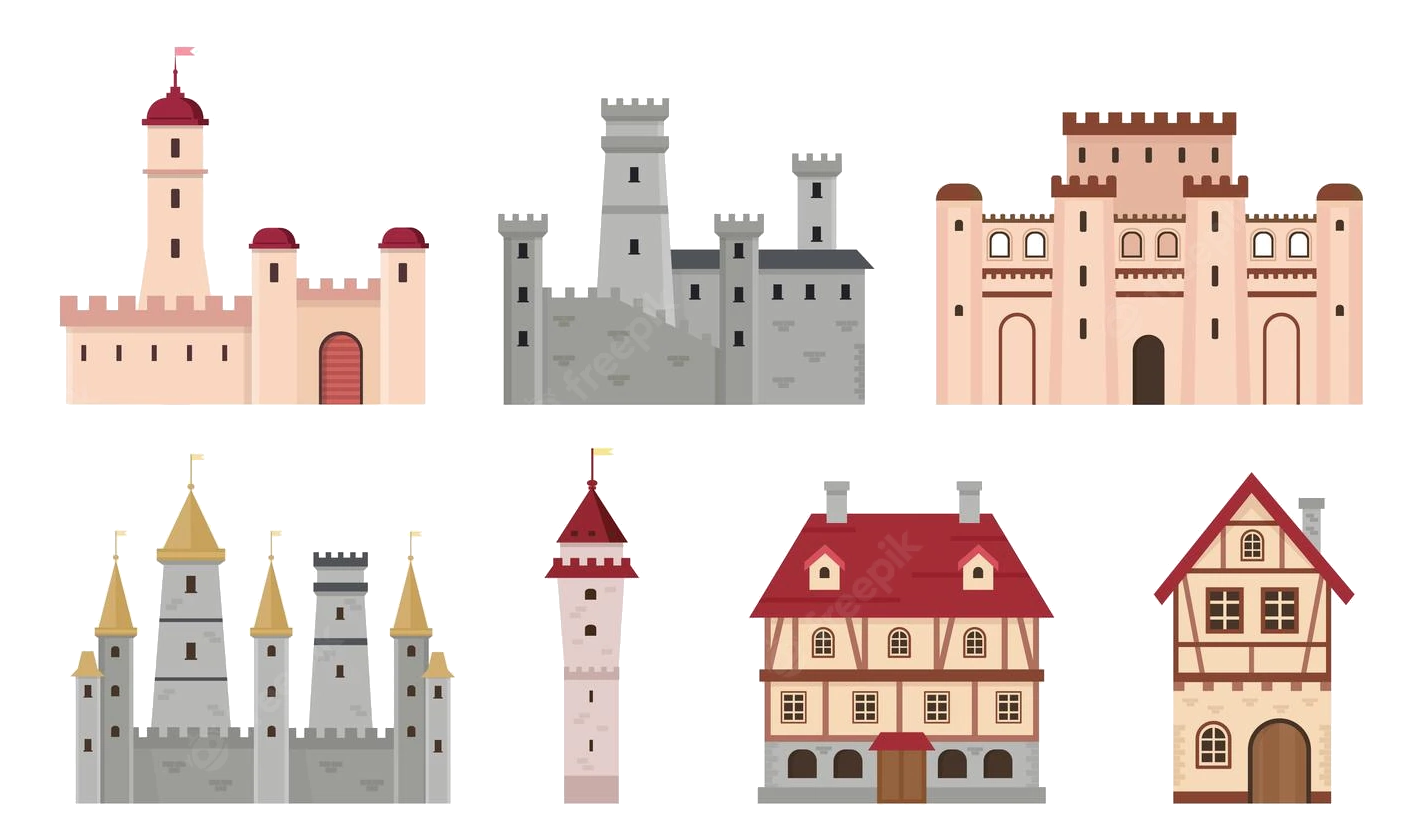 Medieval cities in Europe
Medieval cities in Europe
 Art
Art
 Education and Research
Education and Research